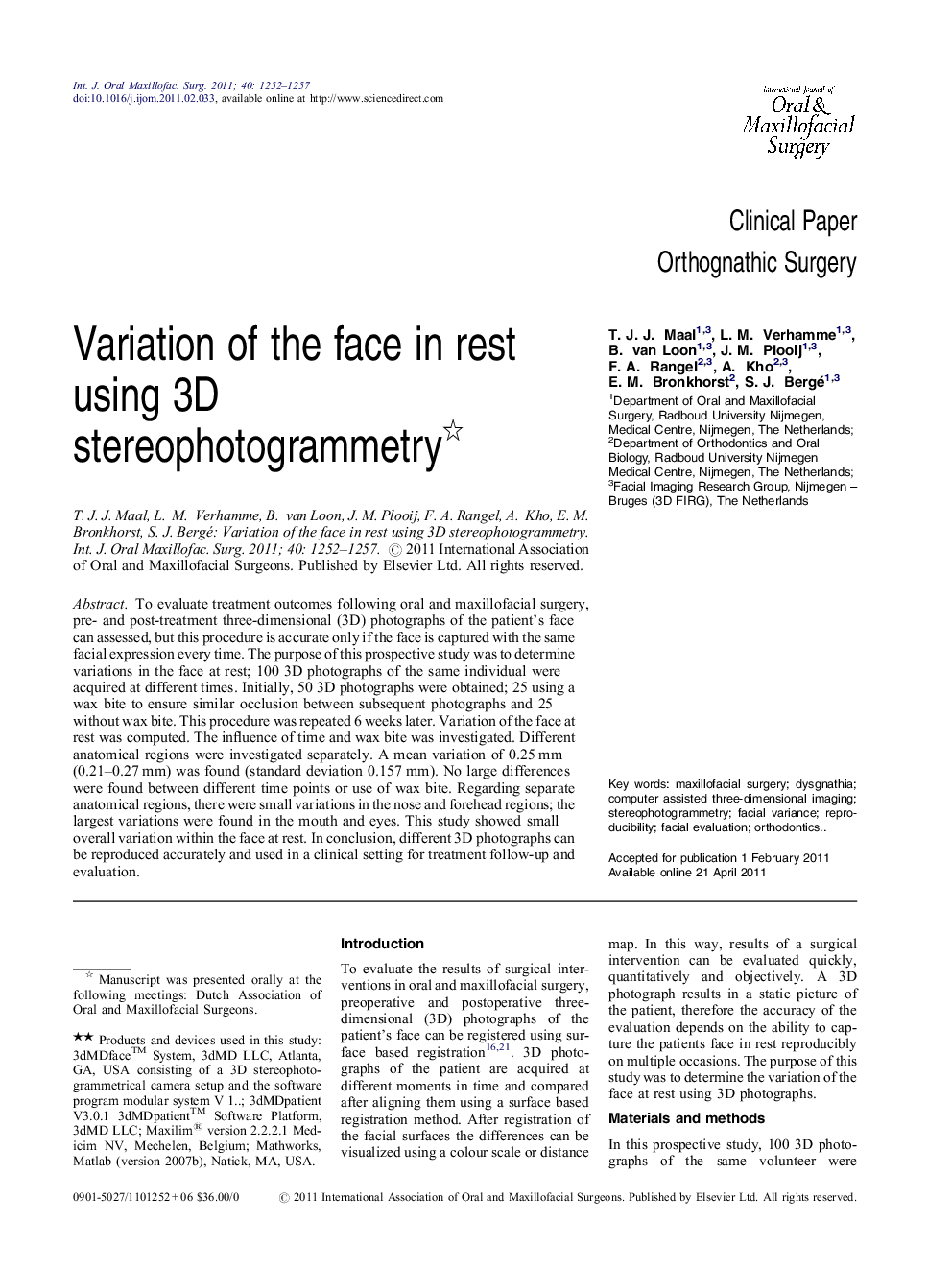| Article ID | Journal | Published Year | Pages | File Type |
|---|---|---|---|---|
| 3133399 | International Journal of Oral and Maxillofacial Surgery | 2011 | 6 Pages |
To evaluate treatment outcomes following oral and maxillofacial surgery, pre- and post-treatment three-dimensional (3D) photographs of the patient's face can assessed, but this procedure is accurate only if the face is captured with the same facial expression every time. The purpose of this prospective study was to determine variations in the face at rest; 100 3D photographs of the same individual were acquired at different times. Initially, 50 3D photographs were obtained; 25 using a wax bite to ensure similar occlusion between subsequent photographs and 25 without wax bite. This procedure was repeated 6 weeks later. Variation of the face at rest was computed. The influence of time and wax bite was investigated. Different anatomical regions were investigated separately. A mean variation of 0.25 mm (0.21–0.27 mm) was found (standard deviation 0.157 mm). No large differences were found between different time points or use of wax bite. Regarding separate anatomical regions, there were small variations in the nose and forehead regions; the largest variations were found in the mouth and eyes. This study showed small overall variation within the face at rest. In conclusion, different 3D photographs can be reproduced accurately and used in a clinical setting for treatment follow-up and evaluation.
